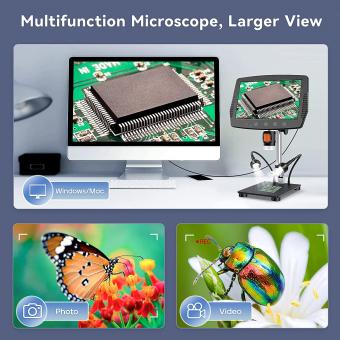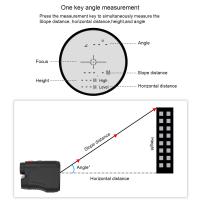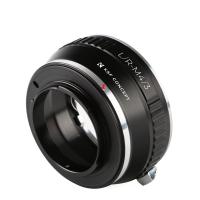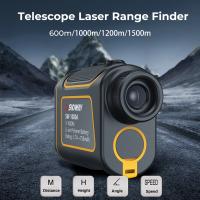Can Particles Be Seen Through A Microscope ?
Yes, particles can be seen through a microscope. Microscopes are powerful tools that use lenses or other techniques to magnify objects, allowing us to see things that are too small to be seen with the naked eye. Depending on the type of microscope and the size of the particles, different techniques may be used. For example, light microscopes use visible light to illuminate the particles, while electron microscopes use a beam of electrons. By adjusting the magnification and focus, scientists can observe and study particles at a microscopic level.
1、 Particle Size and Resolution Limits in Microscopy
Particles can indeed be seen through a microscope, but the ability to visualize them depends on their size and the resolution limits of the microscope being used. The resolution limit of a microscope refers to the smallest distance between two points that can still be distinguished as separate entities.
In traditional light microscopy, the resolution limit is determined by the wavelength of light used. According to Abbe's diffraction limit, the resolution is approximately half the wavelength of light. This means that particles smaller than the resolution limit cannot be resolved as individual entities and may appear as a blur or a diffraction pattern. However, advancements in microscopy techniques have allowed scientists to overcome this limitation.
One such technique is electron microscopy, which uses a beam of electrons instead of light. Electron microscopes have much shorter wavelengths than visible light, allowing for higher resolution imaging. With electron microscopy, particles as small as a few nanometers can be visualized, providing detailed information about their structure and morphology.
Another technique that has revolutionized microscopy is super-resolution microscopy. This method utilizes fluorescent molecules that can be switched on and off, allowing for the precise localization of individual molecules. By combining multiple images, super-resolution microscopy can achieve resolutions beyond the diffraction limit, enabling the visualization of particles at the nanoscale.
It is important to note that the ability to see particles through a microscope also depends on their contrast with the surrounding medium. For example, particles that are transparent or have a similar refractive index as the surrounding medium may be difficult to visualize. In such cases, additional staining or labeling techniques may be employed to enhance contrast and improve visibility.
In conclusion, particles can be seen through a microscope, but the size and resolution limits of the microscope determine the level of detail that can be observed. Advances in microscopy techniques, such as electron microscopy and super-resolution microscopy, have pushed the boundaries of resolution, allowing for the visualization of particles at the nanoscale.
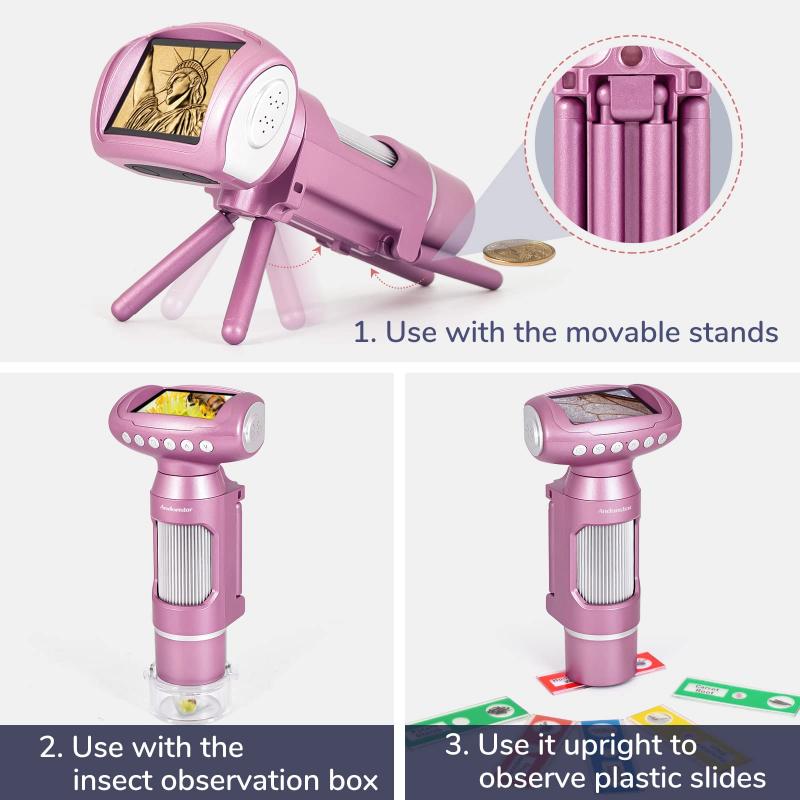
2、 Techniques for Visualizing Submicron Particles with Microscopes
Yes, particles can be seen through a microscope. Microscopes are powerful tools that allow scientists to observe objects at a much smaller scale than what is visible to the naked eye. With the advancement of technology, microscopes have become increasingly sophisticated, enabling the visualization of submicron particles.
There are several techniques that can be used to visualize submicron particles with microscopes. One common method is optical microscopy, which uses visible light to illuminate the particles and magnify them for observation. However, the resolution of optical microscopes is limited by the wavelength of light, making it difficult to visualize particles smaller than a few hundred nanometers.
To overcome this limitation, scientists have developed specialized microscopes such as electron microscopes. Electron microscopes use a beam of electrons instead of light to visualize particles, providing much higher resolution. Transmission electron microscopy (TEM) and scanning electron microscopy (SEM) are two commonly used techniques that can visualize particles as small as a few nanometers.
In recent years, there have been advancements in microscopy techniques that have further improved the visualization of submicron particles. For example, super-resolution microscopy techniques, such as stimulated emission depletion (STED) microscopy and stochastic optical reconstruction microscopy (STORM), have been developed. These techniques utilize fluorescent labeling and clever manipulation of light to achieve resolutions beyond the diffraction limit, allowing for the visualization of particles at the nanoscale.
In conclusion, particles can indeed be seen through a microscope. With the development of advanced microscopy techniques, scientists are now able to visualize submicron particles with high resolution, providing valuable insights into the world of nanoscale phenomena.

3、 Contrast Methods for Enhancing Particle Visibility in Microscopy
Contrast Methods for Enhancing Particle Visibility in Microscopy
Particles can indeed be seen through a microscope, but their visibility can be enhanced using various contrast methods. Microscopy techniques have evolved over the years to improve the visualization of particles, allowing scientists to study them in greater detail.
One of the most commonly used contrast methods is brightfield microscopy, where particles are observed against a bright background. However, this method may not provide sufficient contrast for transparent or small particles. To overcome this limitation, other techniques such as darkfield microscopy, phase contrast microscopy, and differential interference contrast (DIC) microscopy have been developed.
Darkfield microscopy involves illuminating particles with oblique light, resulting in a bright image of the particles against a dark background. This technique is particularly useful for visualizing transparent or low-contrast particles.
Phase contrast microscopy, on the other hand, exploits the differences in refractive index between particles and their surrounding medium. By converting phase shifts into intensity variations, phase contrast microscopy enhances the visibility of particles that would otherwise be difficult to observe.
DIC microscopy utilizes polarized light to create contrast by exploiting the differences in refractive index and thickness of particles. This technique provides a three-dimensional appearance of particles, allowing for better visualization and understanding of their structure.
In recent years, advancements in microscopy technology have led to the development of super-resolution microscopy techniques such as stimulated emission depletion (STED) microscopy and single-molecule localization microscopy (SMLM). These techniques enable the visualization of particles at a resolution beyond the diffraction limit, providing unprecedented detail and clarity.
In conclusion, while particles can be seen through a microscope, various contrast methods have been developed to enhance their visibility. These techniques have revolutionized the field of microscopy, allowing scientists to study particles with greater precision and detail.

4、 Challenges in Observing Nanoparticles Using Electron Microscopy
Particles can indeed be seen through a microscope, specifically an electron microscope. Electron microscopy is a powerful tool that allows scientists to observe particles at the nanoscale, which is essential for studying nanoparticles. However, there are several challenges in observing nanoparticles using electron microscopy.
One of the main challenges is the size of the nanoparticles. Nanoparticles are typically in the range of 1 to 100 nanometers, which is much smaller than the wavelength of visible light. This means that traditional light microscopes cannot resolve nanoparticles. Electron microscopes, on the other hand, use a beam of electrons instead of light, allowing for much higher resolution imaging. However, even with electron microscopy, there are limits to the size of particles that can be observed. Very small nanoparticles, below 1 nanometer, can be difficult to image due to their low scattering cross-section.
Another challenge is the preparation of the samples for electron microscopy. Nanoparticles are often dispersed in a liquid or embedded in a solid matrix, which can introduce artifacts or cause the nanoparticles to aggregate. Sample preparation techniques need to be carefully optimized to ensure that the nanoparticles are well-dispersed and representative of their native state.
Furthermore, electron microscopy requires a high vacuum environment, which can be challenging for certain types of nanoparticles. Some nanoparticles are sensitive to vacuum conditions and may undergo chemical or structural changes. In such cases, specialized techniques like environmental electron microscopy or cryo-electron microscopy may be employed to observe nanoparticles in their native environment.
In recent years, advancements in electron microscopy techniques have addressed some of these challenges. For example, aberration-corrected electron microscopy has significantly improved the resolution and image quality, allowing for better visualization of nanoparticles. Additionally, the development of in situ electron microscopy techniques has enabled the observation of dynamic processes involving nanoparticles, providing valuable insights into their behavior and interactions.
In conclusion, while there are challenges in observing nanoparticles using electron microscopy, it remains a crucial tool for studying these tiny particles. Ongoing advancements in electron microscopy techniques continue to push the boundaries of what can be observed, providing valuable insights into the world of nanoparticles.












